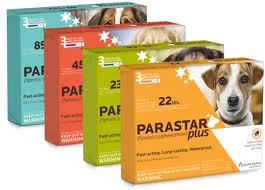Summer is in full swing – hello heat wave! The only creatures enjoying this
weather are the creepy crawlers so now is the time to be extra vigilant with
your flea, tick and heartworm prevention.
Everyone knows how annoying those relentless mosquitoes are when you
are trying to enjoy your yard or back porch. But these pests are more than just
irritating – they can endanger your pet’s health by transmitting heartworm
disease. Heartworm disease is a parasitic infection transmitted when an
infected mosquito bites your dog or cat.
Monthly heartworm prevention is essential year round for dogs and
cats, even indoor kitties. There is NO treatment for heartworm in cats, and
sudden death is a common result of heartworm infections. While it’s true that
infected dogs can be treated, the treatment itself is very dangerous—and can
even be fatal. Left untreated, heartworm disease will kill a dog.
Protecting your dogs and cats against fleas and ticks is important as
well. Tick borne infections such as Lyme disease, Erlichia and Rocky Mountain
Spotted Fever are transmitted when an infected tick bites your dog. The best way to ward these infections
off is with topical flea and tick preventatives like Frontline, Parastar Plus,
K9 Advantix II, Revolution, or Advantage Multi. I recommend sticking with the brand names for these
medications. The generics are not
as good and some are downright dangerous, especially for cats. I also do not trust any “natural”
product enough to effectively repel fleas and ticks. I know the though of applying chemicals to your pets is
unappealing but so are the diseases these critters transmit.
Lyme disease is an especially tricky beast as it is very common and
the medical community does not yet fully understand how it affects dogs
making diagnosis and treatment a challenge. Many dogs will test positive but this does NOT mean they
have the disease, only that they were bitten by a tick carrying the bacteria
that causes Lyme disease. In fact
the vast majority of the Lyme-positive dogs I see never develop clinical signs
of the disease. The best way to protect your dog from Lyme disease is through a
combination of prevention and monitoring.
Fleas can be extremely itching and irritating to both you and your
pets. Some animals are allergic to fleas and one bite can lead to a significant
skin infection. Once a flea infestation invades your home it can be very
difficult to clear it out. The best bet is to prevent that from happening by
applying the same topical medications that protect against ticks.
Luckily, prevention is easy: just a pill and a topical medication once
a month, every single month. If
only everything were that simple.








